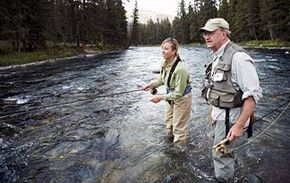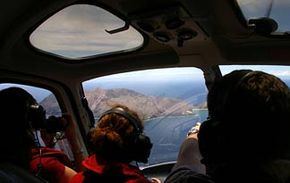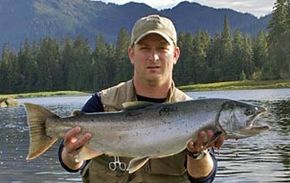PROFILE OF A HELICOPTER FISHERMAN
When you saw the words "helicopter fishing," you probably assumed we were going to tell how to emulate "Madman of the Sea" and "Man vs. Fish" host Matt Watson's feat of diving from a chopper into the Pacific Ocean and landing on the back of a big marlin. But no worries -- we're going to tell you about a different, considerably less risky sort of helicopter fishing. This is the kind in which a copter provided by a sport fishing guide company ferries you to some remote, relatively pristine prime fishing spot -- usually one that you would have difficulty reaching by any other means of transportation. And along the way, you'll probably be able to enjoy a breathtaking, panoramic view of the wilderness.
Helicopter fishing might sound like the sort of pricey adventure that's enjoyed only by billionaire software moguls, movie stars or third-world dictators, but that's not really so. There are plenty of fishing-trip impresarios from Alaska to Australia who are willing to fly you to various remote anglers' paradises, with some day trip packages advertised for less than $500. For that much, the operation will drop you off at a fishing spot, provide a guide (at extra cost) and allow you to bring several fish back with you without additional charges. At the same time, if you've got bucks to burn, there are exclusive, high-end packages. At the posh yet rustic Nimmo Bay Resort in British Columbia, for example, you can engage the exclusive services of a copter and pilot who'll chauffeur your party out into the wild to catch some fish, and then have all of you back at the lodge by evening for a soak in the hot tub and dinner. The price for a party of six for four days is a mere $57,900.
Advertisement


